
—
Watch the episode here:
Listen to the podcast here:
The Art Of Mindfulness And Body Awareness with Tina Greenbaum, LCSW
I’d like to welcome you all to the show. We’re going to have an interview with my friend, Tina Greenbaum. We’ve been getting a lot of questions about mindset, how to keep yourself focused and how to problem solve at the moment.
—
Our guest is Tina Greenbaum. If you’re part of my platform building community, we’ve been talking a lot about breakdowns, breakthrough, fear and mindset. How to clear yourself of all those things and optimally doing it within the moment that you’re having that breakdown. That’s where the gold is at is catching yourself in the middle of it and saying, “I need a second opinion. I need help. I need to shift the conversation.” That is what Tina Greenbaum is good at. She’s a Licensed Clinical Social Worker, an Optimal Performance Specialist and a dynamic workshop leader living in the Bay Area of San Francisco. Throughout her extensive career, she has been a pioneer in combining traditional psychotherapy with body awareness, energy psychology, neuroscience and spirituality. She brings the latest discoveries in neuroscience with the ancient traditions of the East as well as the best of West learning theory. She works with intergenerational entrepreneurs and business professionals, teaching them high-performance skills necessary to elevate their presence in a challenging and pressure situation. Welcome, Tina.
Thank you, Juliet. It’s fun to be here.
Tell us what you do day-to-day with your clients.
Depending on who the clients are and where they are, I always start with where somebody is at and what it is that their particular goals are. I’ll take one of my typical clients, who was a business leader. I lived in New York for a long time, so I worked with a lot of high power and high achievers. This one woman in particular was vice president of a high-end fashion industry company. It was also a misogynistic company. This was before the #MeToo thing but she didn’t know what to do. She wasn’t used to not knowing what to do. She was accomplished and a good problem solver. We started to look at a lot of the issues that she had to deal with. This was on a one-on-one basis. Sometimes I deal with groups of people and sometimes one-on-one. We looked at the problems and we looked at the options that she had in order to deal with. In other words, I consider myself a good problem solver. That’s what I help my clients do a lot.
We can only see as far as our vision has allowed us. Click To TweetLet’s look at it as an emotional situation as we possibly can. We’ll come back to the emotion, but let’s look at the problem. If we handle it this way, what are likely the outcomes that become if we do it this way or we’ll try it another way. Then we go around with as many different options as possible so that the blind spots that we have and we all have them, are no longer blind. They’re out there. “I could walk into this minefield. Am I prepared for that? I could walk into this. I could walk into that. I could walk away,” until she was able to make what I call an informed decision, not an emotional decision. Even though the emotion was acknowledged, but she had time to sit and think about it, calculate and what was the best way for her to move on.
That’s a typical situation and I like complex interpersonal relationships. As I said in one of the pitches that I gave at CEO Space, one of my clients called me her Windex. She would come in in a fog and she would leave, “I see.” We all need somebody to help us see because the unconscious, by its nature, is unconscious. We can only see as far as our vision has allowed us. Even when I get into a situation where it requires a big decision, I’ll call my trusted advisors and say, “What haven’t I seen? What am I missing here?” That’s the role I play for a lot of people.
You and I started this because I was talking to you about the fear and sabotage that I see out in my platform-building marketplace. Many people write that book or create that program and they decide, “I want to sell it,” but nobody knows who they are. We’ve talked a lot about how you can address fears like that. The fear of being seen, the fear of success and the fear of failure.
What I like to say is there are only so many themes. Fear is a theme, but there’s an infinite variation on them. It’s important for somebody to know and be able to pinpoint, “What is it that I am specifically afraid of?” You named a bunch of things, fear of success and fear of failure. You may be that person that’s afraid of success and the next person is maybe that person who’s afraid of failure. They’re different. I like to teach people how to connect the mind and the body because the mind and the body work together. In our culture, we are what I call walking hits. We think, we think and we think. We go around in circles and we create loops but we frequently can’t find the way out of it. I’d like to introduce people to the concept that you have a body and within your body is information.

Mindfulness: It’s important for everybody to know and be able to pinpoint what it is that they are very specifically afraid of.
For example let’s say, “I noticed,” because that’s one of my big words is without the judgment or anything, I just notice. I notice that when I go to write this email to this very high-end person, who I would like to be in front of, I go to sit down at the computer and I get distracted. Something comes along or there’s an email that comes along my way. Then I go over there and I notice the next day. By Friday, I started this Monday and by Friday, I have not written that email. Let’s say that’s a typical scenario. I might sit with that person or even if you’re in a group, teach you. Let’s go look at what it feels like when you go to sit down at that computer, just that moment and what do you notice?
It could be a thought that says, “I don’t want to be here.” It could be a feeling in my stomach or I start to get a little queasy or I start to get a little anxious or my heart starts to palpitate or I get something in my shoulders that start to bother me. I’m going to ask you to stay there and notice. What we frequently want to do is we want to get that feeling of discomfort. We want to get over it. That’s why we walk away. I don’t like this feeling. Even though I’m not even aware of what’s going on, I don’t like it. I’m going to walk away. Then it goes into that abyss of, “I don’t know why I don’t write this email.” Now, we’re going to take it and we’re going to dissect it like under a microscope. That’s what mindfulness is.
People have a lot of different ideas about mindfulness. It’s big these days in terms of a term, but it’s an ancient practice. As a psychotherapist in my book, we can’t change anything until we’re aware of what it is that we even want to change. It’s like in business, “I’m not making the money that I want.” I have to analyze it, “Why am I not making that money? What’s gone wrong? What’s my part? What’s not my part?” I do the same thing with fear. I noticed that I get this queasy feeling in my stomach. I’m going to sit with that a little bit and I’m going to ask you a question, “Is that a familiar feeling? Have you felt it before not just around this email?”
The mind-body has its own brilliance and wisdom. Once we put our attention and our intention on a particular body part that has a lot of emotional molecules, it begins to start to awaken the memory and awaken the feelings and awaken, “I remember. When I was in college, I’d sit down to write a paper for a teacher. My grades depended on it.” We begin to start to see the train of the pattern. This is a unique work. That’s why one size does not fit all. It can be delivered in a group. I’m equipped to take people to places that traditional executive coaches are not trained. Sometimes we get into places that open up big things. I find that dangerous when we’re talking about fears and things that if you don’t know how to measure that, know how to put people together or how far to take them or what they can handle or what they can’t handle, it gets into a little not so great territory.
We can't change anything until we're aware of what it is that we even want to change. Click To TweetWhen we’re dealing with fears, they may be simple or they may be complex. If you haven’t done the work or you haven’t been with somebody that can guide you there, we’re operating where the unconscious is moving us rather than us moving it. I use this example a lot of times. Imagine that these are metal filings. We know that if you put a magnet under the metal filings, the magnet will move the filings. In our culture, this is what we think is everything, right here on the top and yet, this is the unconscious that is driving the train. I got it from Deepak Chopra but I’ve used it for years. Depending on how great you want to be and how much you want that book out there and how much you want people to notice you, you have to do the personal work.
Pushing yourself beyond our comfort zone, our natural tendency is to run away. How do we keep challenging ourselves without going overboard? In yoga, there’s the point where you’re on your edge of discomfort. If you ask too much of yourself, what’s going to happen? It’s going to hurt. You’re not going to be able to accomplish it. You’re going to overload. You’re going to go into overwhelm. If you don’t ask anything in yourself, nothing happens. We don’t grow. It’s learning how to be on that edge of discomfort. We cannot go any faster than our nervous system will allow. Many of us high achievers, I included, are always aspiring, wanting to thrive and grow, we have to be aware of what we can handle at any one time. If we ask too much of ourselves, we never turn around and go in the other direction.
It’s interesting that you used that yoga analogy because as Type A personalities, we tend to get in a yoga class and all of a sudden, we’re being our competitive selves. I went back to yoga. It’s been interesting because I forced myself to go to restorative yoga. It is so much harder to lay there and do nothing than it is to do the poses, be super engaged and competitive. I went to the class because I thought, “This will be easy. I’ll get lots of rest.” I’m like, “My mind won’t clear.” It’s much more challenging than the hardcore.
Yoga is one of my most favorite mirrors in terms of working with people because the way that you approach something is the way you approach everything. The way you approach yoga which challenges that Type A warrior energy to allow that receptive feminine, quiet energy. In that little thing that you shared, that tells me so much about where the work needs to happen.

Mindfulness: Stress is the perceived amount of control that we think we have or we don’t have.
Most of the time, I’m a bull in a China shop. I’m persistent. I get it done. I’m action. It’s hard for me to go into inaction. That could be a good thing.
There’s a wonderful saying in spiritual work, “From nothing comes something.” For those of us to be able to allow the nothingness, to appeal and then the greater voice, the greater lessons and the greater parts of your highest self start to show up.
You and I sat on a plane together for four hours. We were talking a lot about the author, coach and speaker place where people say, “I want to be seen. I want to be visible. I want you to see my work,” and then they hide. I called it passive-aggressive. I’m not a therapist. You got a much better take on it than I did. I think it’s like, “I want to be that but I don’t want to put any work.” You had a good perspective on it that I’d like you to share.
All behavior has a positive intent, including all these awful people that are doing the most awful things that we could ever think about. In their psyche, their behavior has a positive intent for them.
The way that you approach something is the way you approach everything. Click To TweetWe talk about this. Would that be like when we talk about people come into my group and they pay attention to everything, but they don’t want to fix it because it serves them in some way?
They may or may not be aware of it, probably not and it comes off frequently as, “I’m lazy. I’m not motivated. I’m not this. I’m not that,” all the negative things. I have worked in this field for so many years. You dig a little bit and pull away from the judgment. Let’s look at what’s the, “How come?” You say you want to do this and yet you’re not doing it. Let’s look at what’s behind that. The way I work with it is I do the opposite. Let’s imagine that you’re doing it and what comes up, like when we sat there with fear. What comes up? What shows up? “I’m scared or why me? Why should anybody listen to me?” All these stories that we’ve been told from early childhood begin to start to surface.
I’ll give you another example. I had a client in one of my workshops. I did a hot seat. This guy was like, “I’ll do it.” Her deal was, she was starting a new business. Every time she thought about moving forward, this voice would come through, “Are you really going to do this? You can’t do this. Who are you?” I did the exact same exercise that I described to her. I said, “Where do you feel it in your body?” She said, “I feel it in my stomach.” I said, “Sit with it for a minute.” She says, “That’s my mother’s voice. She was so critical.” She had embedded from childhood, as we do unconsciously, her mother’s voice. That became what she thought was her voice. The truth was, it wasn’t her voice. If we could put mom aside for a little bit, what do you think? “I’m good at this.”
That’s what has kept me so interested in this work for so many years because every story is different. There are only so many themes. When you and I talk, your background, your history, your family and the things that you were told are unique to you and unique to your system. You had siblings. They get the same parents. They may react in one way. You reacted in another way because of your character’s logical nature and because of the experience and how the two impacted together. What could be more interesting than your own story, your own history or your own system to become a student of how this body-mind operates together? When you put the time, the energy and the effort into it, you are a powerhouse of information about you. No matter what comes at you, you have a way to separate, “Is that their stuff or is it mine?” It becomes simple because there’s so much clearing that happens. Energetically, you’re not holding all this other garbage.
The way that I look at healing and all this performance stuff, it’s cleared out. Let’s clear out the junk so that you have space. Being under pressure, our most natural thing to do is to tighten up. Our muscles tighten. The mind shuts down. We get a little spinny. The heart starts racing and we are not available. That’s the stress response, which is a natural response to something that we feel like we have no control over. Stress is the perceived amount of control that we think we have or we don’t have. If it’s perceived, I want to come back to, “How can I be in control? What’s in my control?” I have to work with my body so that my body is calm enough on a regular basis. When I asked more of myself, I’m at a higher level because I can tolerate more stress. We call it the window of tolerance.
Our goal is to enhance this window of tolerance. If stress comes along, I’ve got all this space. Yes, I might lose it but there’s a lot that has to take me over the edge. When we’re performing or when we’re being interviewed or when we’re on stage or we’re making a pitch or we’re doing any of those things, we want the body to be calm. When the body is calm, the mind slows down. When the mind is closed down, we can think. We can insert thought. We’re not on automatic. To be a great performer, there’s a lot that goes into it in terms of practice and repetition because you’re quieting down the left side of the brain, which is the chatter side. The right side of the brain is opening up, which is your creative side which is where this muscle memory and things that are in your system are available to you.
You have a free gift for us too, don’t you?
I have the beginning of what you can begin to do to start to master the mind and the body. It’s the Five Tips for Peak Performance. For each one of the tips, I deal with focus, relaxation, dealing with negative self-talk, how to visualize and dealing with fear. That is for each one of those. You can find it on my website at TinaGreenbaum.com. If you scroll down on the home page, there’s a thing that you can click and it will come to you.
Thank you so much for being here. We appreciate it.
It’s my pleasure.
Tina is inside of our platform building community. If you want to reach out to her there, you can either go to TinaGreenbaum.com or inside of our group. Find her, flush her out and make an appointment and talk more about this.
Thanks for the opportunity.
Important Links:
- Tina Greenbaum
- CEO Space
- www.TinaGreenbaum.com
- www.MasteryUnderPressureQuiz.com
- www.MasteryUnderPressure.com
About Tina Greenbaum
 Tina Greenbaum, LCSW is an Optimal Performance Specialist, Holistic Psychotherapist, Author, Speaker and Workshop Leader. With over 35 years of experience, she helps CEO’s, leaders and aspiring leaders to be as effective as they can be by guiding them to find their own blind spots, both personally and professionally, and then teaches them how to get the best from the teams they lead; ultimately leading to happier employees, increased retention and greater productivity. Using cutting-edge technologies, she combines the latest in neuroscience with ancient traditions of the East. She is the creator of the program Mastery Under Pressure, an executive coaching program that teaches Olympic-level mindset skills for peak performance in high-stakes and high-stress environments.
Tina Greenbaum, LCSW is an Optimal Performance Specialist, Holistic Psychotherapist, Author, Speaker and Workshop Leader. With over 35 years of experience, she helps CEO’s, leaders and aspiring leaders to be as effective as they can be by guiding them to find their own blind spots, both personally and professionally, and then teaches them how to get the best from the teams they lead; ultimately leading to happier employees, increased retention and greater productivity. Using cutting-edge technologies, she combines the latest in neuroscience with ancient traditions of the East. She is the creator of the program Mastery Under Pressure, an executive coaching program that teaches Olympic-level mindset skills for peak performance in high-stakes and high-stress environments.
Love the show? Subscribe, rate, review, and share!

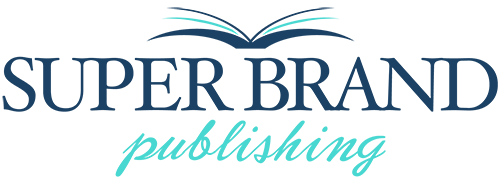

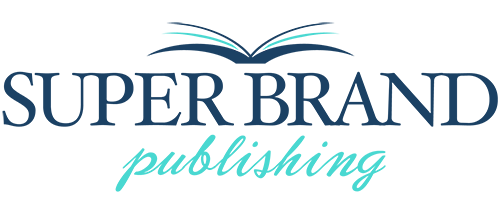

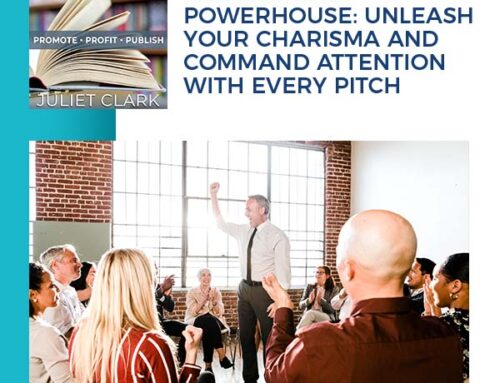
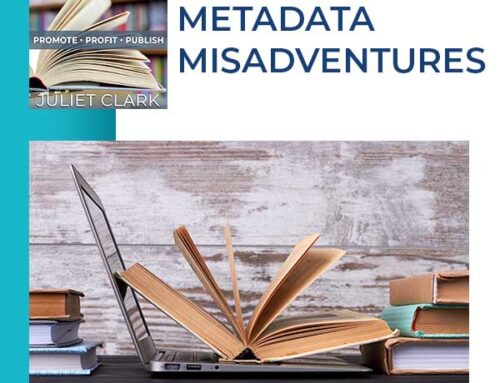

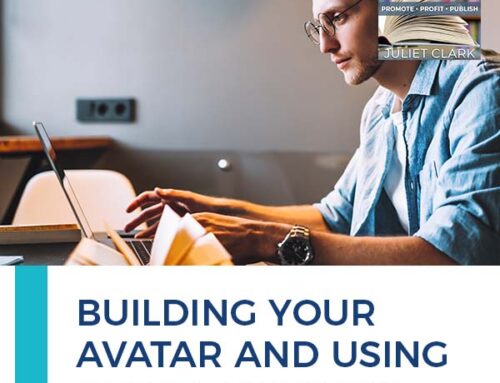

Leave A Comment